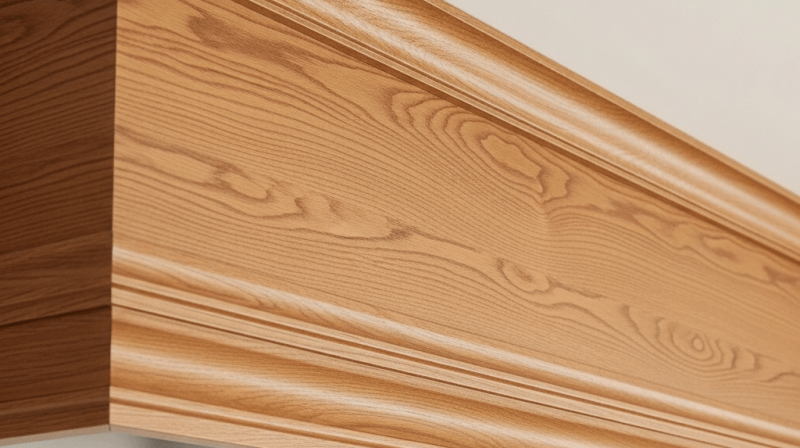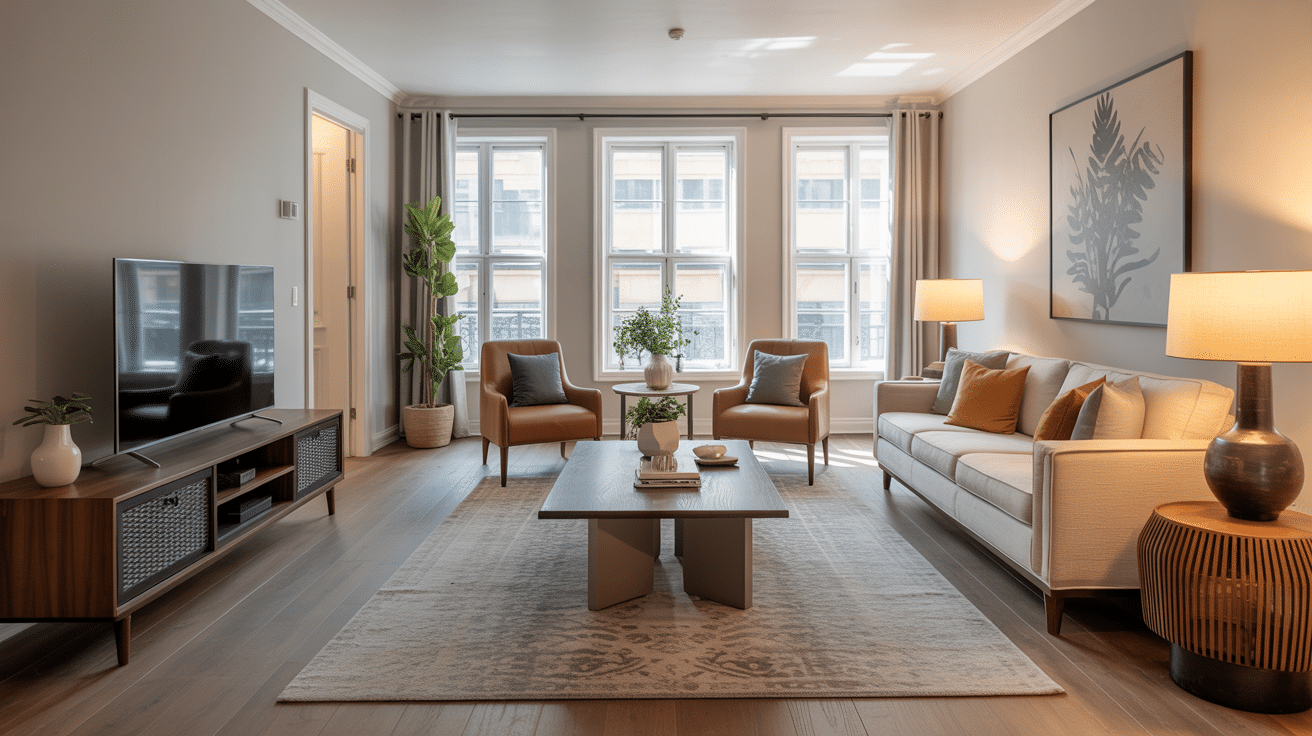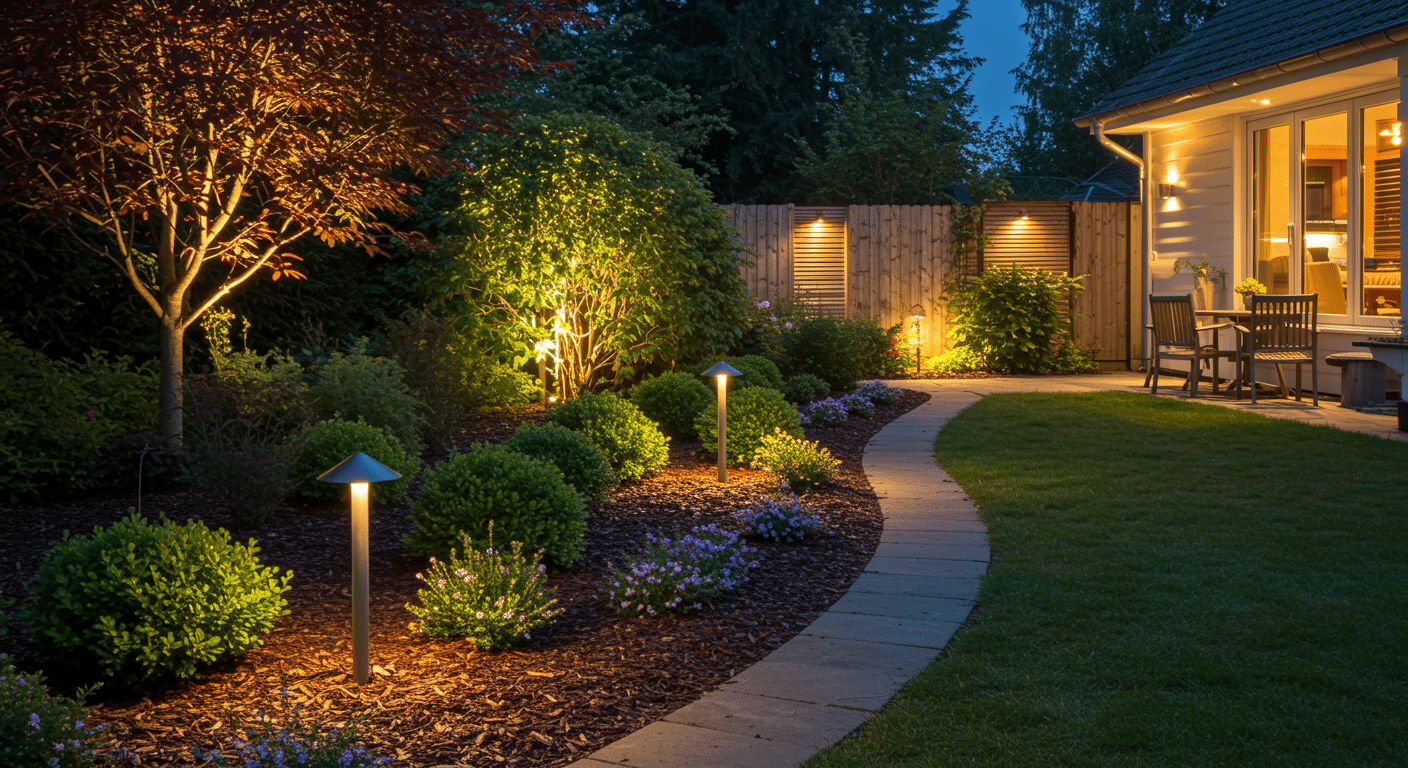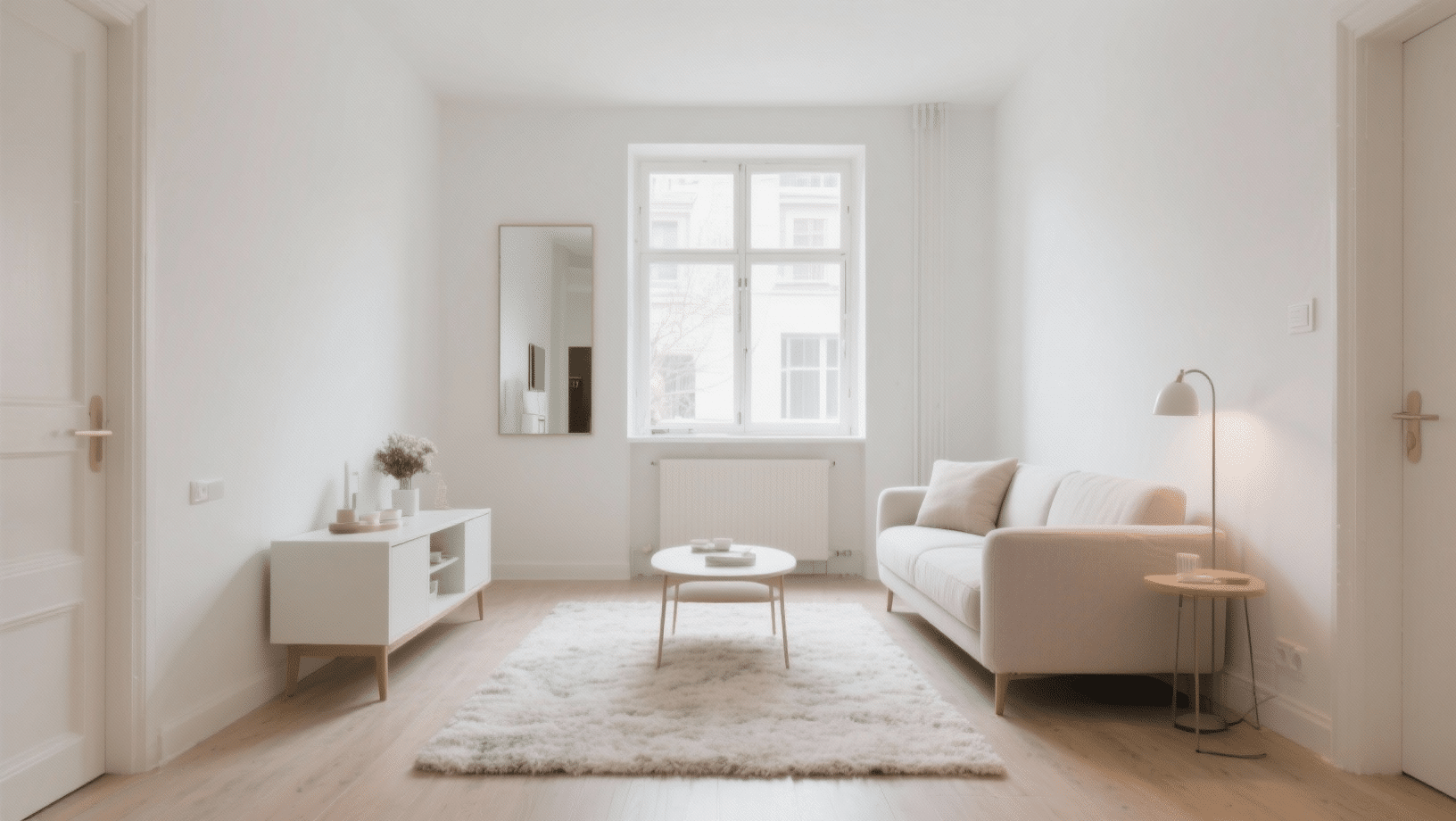Kitchen soffits often leave homeowners scratching their heads. These boxed areas above your cabinets seem awkward and hard to style.
Many people see them as design obstacles rather than opportunities.
But I’m here to change that perspective completely. You don’t have to live with boring, empty spaces that collect dust.
In this guide, I’ll show you creative ways to modify your kitchen soffit into a design asset. We’ll cover practical storage solutions, lighting options, and styling tricks that make these spaces work harder for you.
What is a Kitchen Soffit?
A kitchen soffit is that boxed-in area you see between your upper cabinets and the ceiling. It’s essentially a bulkhead that drops down from the ceiling, creating a gap above your cabinets.
I’ve worked with countless homeowners who didn’t even know what to call this space.
They’d point up and say, “that thing above my cabinets.” Well, that thing has a name, and understanding it is the first step to making it work for your kitchen.
Kitchen soffits affect how your kitchen looks and feels. A well-designed soffit can make your ceiling appear higher and your kitchen more polished.
But a poorly handled one? It makes the whole space feel cramped and unfinished.
The Purpose of Kitchen Soffits
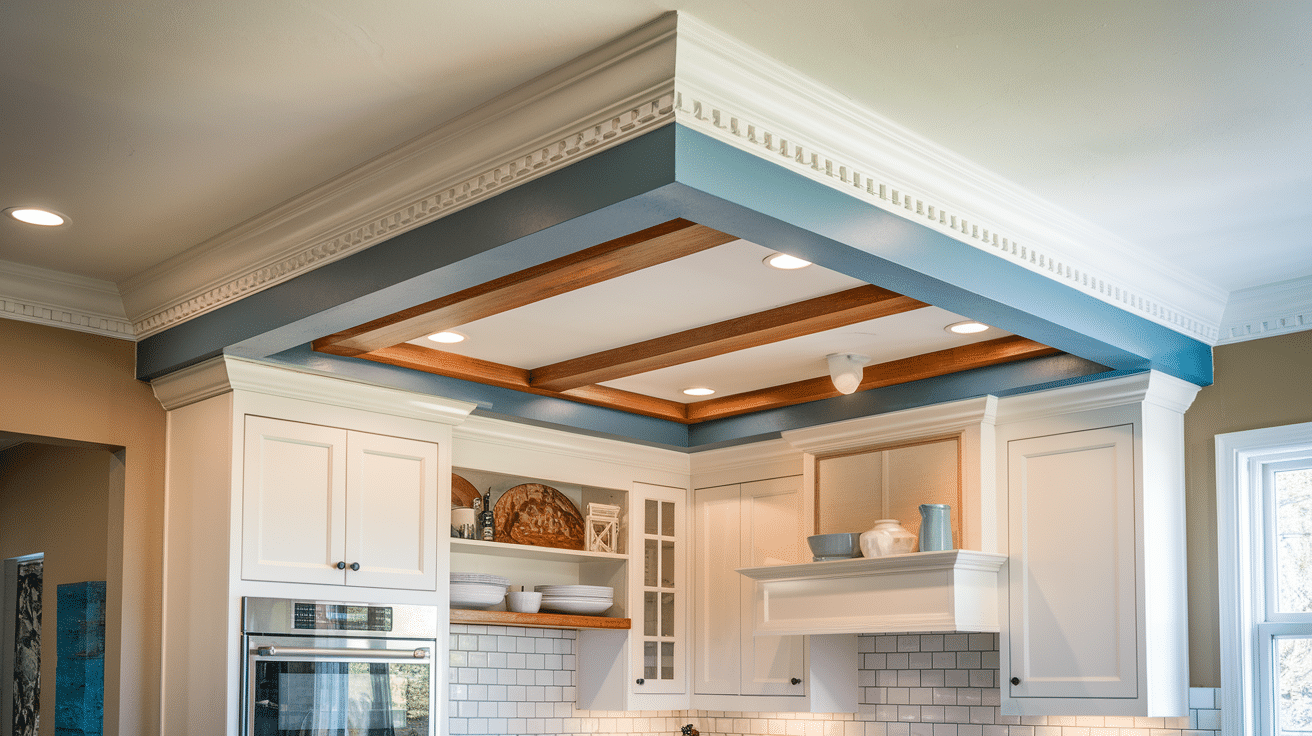
Here are the four main reasons why kitchen soffits exist in homes:
1. Hide mechanical systems – Soffits conceal ductwork, plumbing pipes, electrical conduits, and gas lines that builders couldn’t route through walls or structural spaces.
2. Create architectural definition – They provide visual boundaries between kitchen and adjacent spaces, especially in open floor plans where clear room separation is needed.
3. Solve structural limitations – Soffits work around low ceiling heights, uneven floors, or existing structural elements that prevent cabinets from extending to the ceiling.
3. Prevent maintenance issues – They eliminate the hard-to-reach space above cabinets where dust, grease, and debris typically accumulate over time.
Should You Remove the Kitchen Soffit?
The honest answer? It depends on your specific situation. I’ve helped homeowners remove soffits that transformed their kitchens completely.
But I’ve also talked others out of removal when the costs and complications weren’t worth it.
Factors to Consider: Budget, Structure, and Load-Bearing Issues
Your first step is figuring out what’s actually inside that soffit. I always recommend having a contractor take a look before making any decisions. Here’s what you need to know:
Structural elements – Some soffits contain load-bearing beams or supports. Removing these requires structural engineering and permits. Not a DIY job.
Mechanical systems – Ductwork, plumbing, and electrical lines often run through soffits. Rerouting these systems can cost thousands, depending on your home’s layout.
Ceiling height limitations – Removing a soffit might reveal damaged drywall or different ceiling textures that need repair.
Cabinet compatibility – Your existing cabinets might not extend to the full ceiling height, requiring new cabinetry or expensive modifications.
Hidden Costs of Removal
This is where many homeowners get surprised. The soffit removal itself might only cost a few hundred dollars. But here’s what often comes next:
| Type of Work | Description | Cost Range |
|---|---|---|
| Drywall and Paint Repairs | Expect to repaint the entire kitchen and possibly replace ceiling sections | Varies |
| Electrical Work | Relocating switches, outlets, or under-cabinet lighting | $500 – $1,500 |
| HVAC Modifications | Rerouting ductwork through walls or attic space | $1,000 – $3,000 |
| Cabinet Extensions | New filler pieces or taller cabinets to reach the ceiling | $2,000 – $5,000 |
| Permits and Inspections | Required for structural changes in many areas | Adds time and fees |
Kitchen Soffit Ideas and Inspirations
Now comes the fun part, turning your soffit from a problem into a feature.
I’ve collected these ideas from real kitchens where homeowners made their soffits work beautifully. Some hide utilities, others make bold statements, and a few practically disappear.
1. Decorative Soffits That Disguise Utility
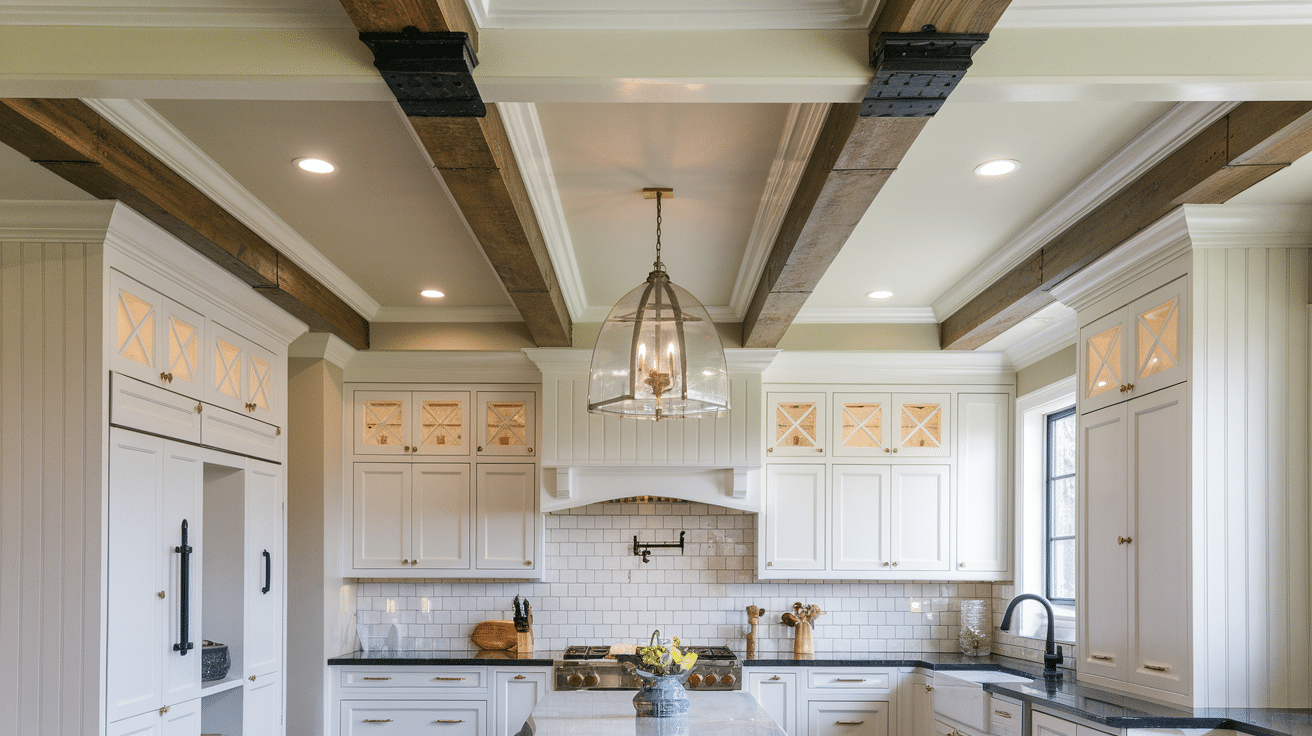
Crown molding or trim wraps: I love this approach because it’s budget-friendly and makes a huge impact. Add substantial crown molding where your soffit meets the ceiling.
Then run matching trim along the bottom edge. This creates the illusion that your cabinets extend all the way up.
The soffit becomes part of the cabinet design instead of an awkward afterthought.
Faux beam designs: Here’s where you can get creative. I’ve seen homeowners add wooden beams across their soffits to create a rustic farmhouse look.
Use lightweight foam beams if you’re worried about weight. Paint them to match your cabinets or opt for a bold, contrasting stain. The key is making the soffit look intentional.
2. Statement Soffits for Visual Interest
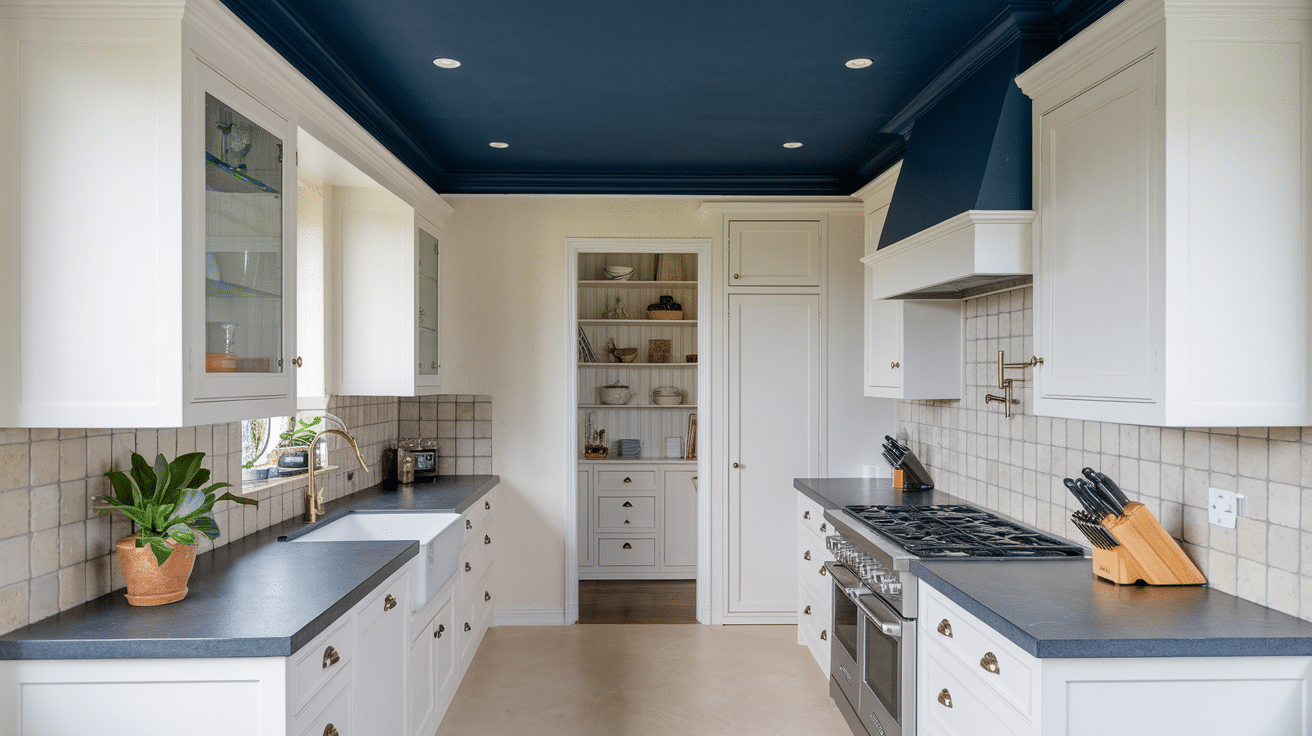
Contrasting paint or wallpaper: Sometimes, the best strategy is to embrace your soffit completely. Paint it a bold color that contrasts with your walls and cabinets.
I’ve seen deep navy soffits in white kitchens that look absolutely stunning. Wallpaper works too, just choose something that can handle kitchen moisture and grease.
Recessed lighting integrations: Transform your soffit into a lighting feature. Install recessed lights along the bottom edge to create beautiful under-cabinet illumination.
Some homeowners add LED strips inside the soffit for indirect uplighting. This makes the ceiling appear higher while providing functional task lighting.
3. Soffits with Storage: Maximizing Utility
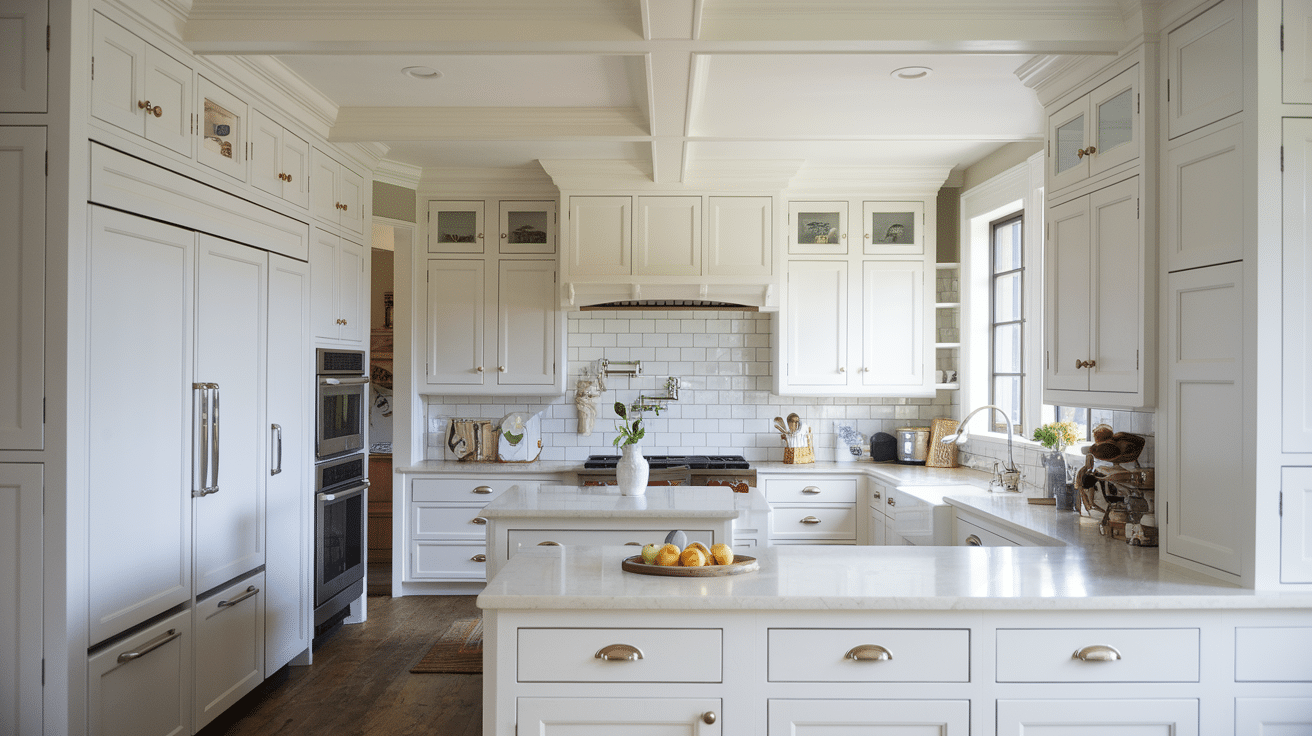
Shallow upper cabinets built around soffits: Why waste that space? I’ve helped homeowners install narrow cabinets that fit perfectly within their soffit depth.
These work great for storing items you don’t use daily, holiday dishes, serving platters, or small appliances. Just make sure the cabinet doors can open fully.
Hidden drawers and niches: Get clever with pull-out drawers that slide into the soffit space. I’ve seen beautiful spice storage solutions and even wine glass holders tucked into soffits.
Open niches work too if you want to display decorative items or cookbooks.
4. Seamless Transitions: Soffits That Disappear
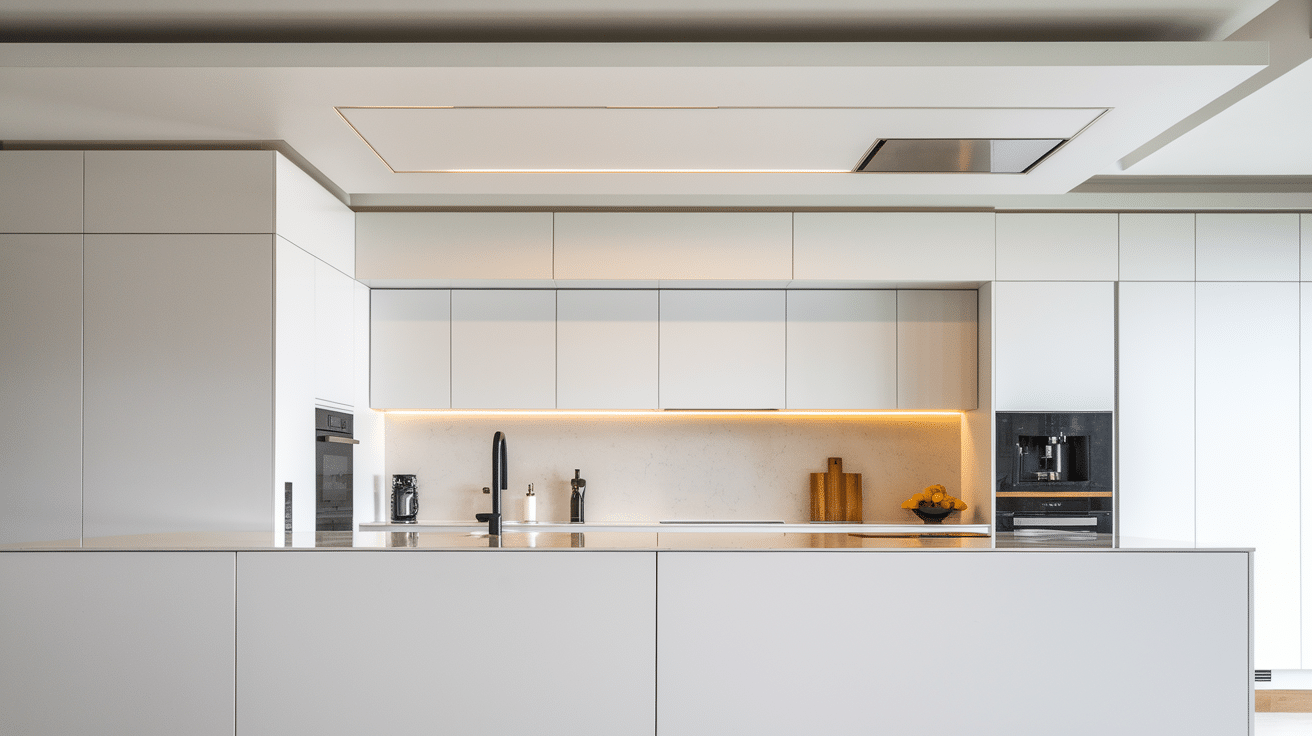
Matching paint to wall or ceiling: Sometimes the best soffit is one you don’t notice. Paint your soffit the same color as your walls or ceiling to minimize its visual impact. This works especially well in kitchens with neutral color schemes.
Flush-mounted cabinetry tricks: The ultimate disappearing act involves building your cabinets to appear flush with the soffit. Add filler strips and trim work to create clean, continuous lines. When done right, people won’t even realize there’s a soffit there. This approach requires precise measurements but delivers a truly custom look.
Alternatives to Removing Kitchen Soffits
Not ready for a full soffit demolition? I get it. Here are three smart alternatives that give you a fresh look without the mess and expense of complete removal.
Partial Removals with Boxed Framing
Sometimes you can remove just the front face of your soffit while leaving the structural frame intact. I’ve done this when utilities run through the back portion, but the front is purely decorative.
You end up with a shallow recess that’s perfect for lighting or display shelves. It’s like getting 80% of the benefit with 20% of the work.
Floating Shelves and False Cabinet Fronts
Here’s my favorite budget-friendly trick. Install floating shelves at the bottom of your soffit to create the illusion of extended storage. Add cabinet door fronts below the shelves to match your existing cabinetry.
From ground level, it looks like you have full-height cabinets. The soffit becomes invisible, hidden behind your new “upper cabinets.”
Vertical Panel Disguises
This technique works wonders in traditional kitchens. I install vertical wood panels or beadboard across the entire soffit face.
Then I add matching panels to adjacent walls to create a cohesive wainscoting effect. The soffit stops looking like a separate element and becomes part of your wall treatment instead.
To Conclude
Your kitchen soffit doesn’t have to be a design headache anymore.
I’ve shown you how these seemingly problematic spaces can become functional storage, stunning focal points, or practically invisible features that blend with your overall design.
The key is working with what you have instead of against it. Whether you choose decorative trim, bold paint, hidden storage, or seamless integration, your soffit can enhance your kitchen’s style and function.
What’s your next move? Start with one small change and see how it transforms your space. Your kitchen soffit might just become your favorite design feature.


